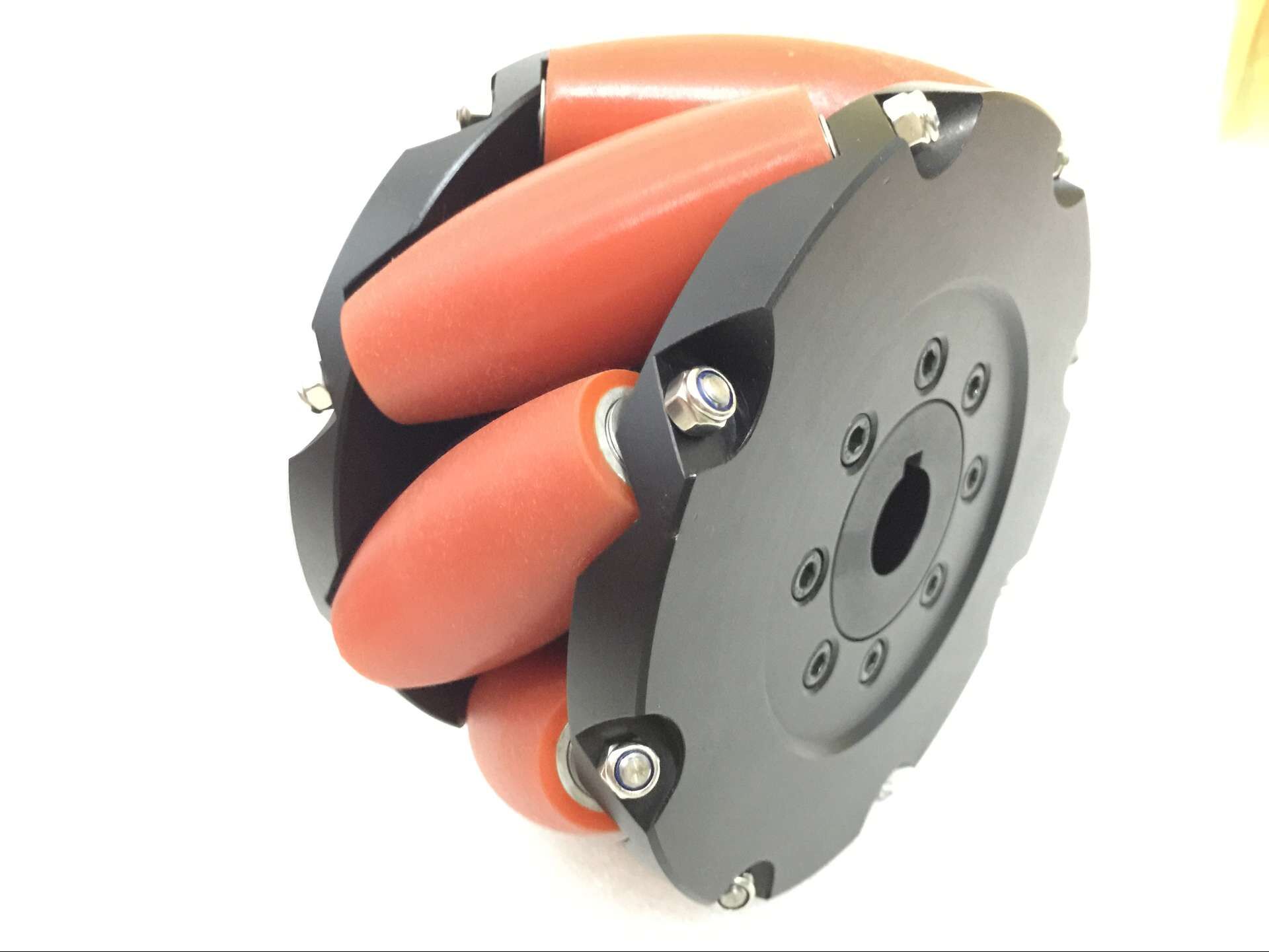

Mecanum Wheels
The design principle of the Mecanum wheel is that rollers arranged at an angle of 45 degrees to the axis are installed in the outer ring of the wheel to contact the ground. When rotating, the frictional force will generate a reverse thrust of 45 degrees with the axle [3]. The thrust force can be divided into longitudinal and lateral vectors. The entire car body is driven by two pairs of Mecanum wheels with mirrored arrangement of rollers, each wheel will generate a corresponding vector, and the combined force of these vectors determines the final active state of the car body. By adjusting the independent steering and rotational speed of each wheel, the entire vehicle body can move forward, traverse, obliquely, rotate and its combination.
The advantages of the Mecanum wheel are its compact structure and flexible movement, which are very suitable for working environments with limited space and many right-angle bends. The downside is that the net thrust produced by the same torque is less efficient because the vectors produced by the individual wheels cancel each other out. At the same time, the roller structure is more complex, the cost is higher, and the wear resistance is far inferior to that of ordinary one-way tires. It is only suitable for relatively smooth land surfaces, and its durability is greatly reduced when encountering rough and complex terrain.











